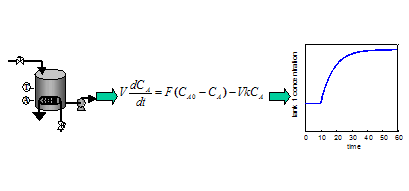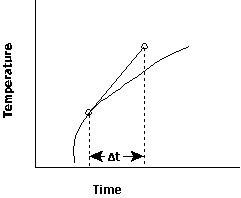

Chapter 3
Mathematical Modelling Principles
Home
Index
Check Your Reading Study Questions Thought Questions
In this chapter, there were six main concepts. The questions will be categorized according to the most relevant concept.
| Modelling Procedure | Fundamental Balances | Degrees of Freedom |
| Linearity | Numerical Methods | System Insight |
 |
 |
| Check Your Reading |
Solidify the Concepts |
| 3.1 Select the fundamental balances used in chapter 3. |
Fundamental Balances |
|
Balances involve entities that we believe are conserved! |
| 3.2 Which ONE of these is not a constitutive model. |
Fundamental Balances |
|
Heat Transfer
Q = hA(DT) |
Chemical Reaction Rate
ra = k0e-E/RTCA |
|
Degrees of Freedom
DOF = NV - NE |
Phase Equilibrium
yi =Kixi |
|
Equations of State
PV = nRT |
Fluid Flow
F = Cv(DP/r)1/2 |
| 3.3 Select which answer better describes the key differences between fundamental and constitutive models. |
|
|
Fundamental models govern all physical systems under common assumptions valid for chemical processes. Constitutive equations are valid within the ranges of the underlying data and are often sufficiently accurate for the specific system being studied. |
Fundamental
models are universally applicable, |
| 3.4 If a modelling goal were to determine the time constant and the steady-state gain, which of the following would be the most important sub-goal? |
|
| 3.5 Select the output response which would result from a single step input to a first order system. |
|
| 3.6 The numerical solution for a differential equation provides the exact values of the dependent variable for the specified value of the input variable and the specified initial condition. |
|

| 3.7 Which of the following is the correct form of the Euler integration formula for a first order differential equation? |
|
| A | Yk = Yk-1 + (dY/dt)k-1Dt |
| B | Yk = Yk-1 + (dY/dt)2k-1Dt |
| C | Yk = Yk-1 + (dY/dt)k-1(Xin)k-1Dt |
| D | Yk = Yk-1 + Kp(1-e-t/t)Dt |